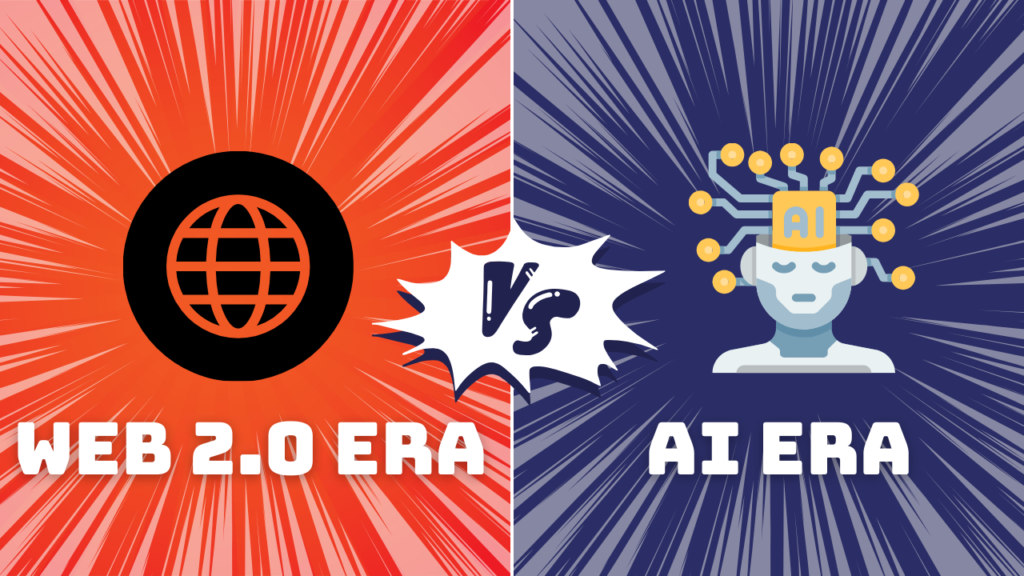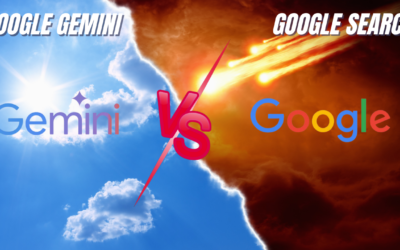The Web 2.0 Era vs. the AI Era: Striking Similarities and Lessons on Not Repeating Mistakes

The rapid adoption of AI today mirrors the Web 2.0 boom of the early 2000s. Both eras revolutionized industries and created new winners and losers almost overnight.
1. Parallel Technological Disruptions
Web 2.0: Defined by user-generated content, social media, and interactive web experiences. Companies like Google, Facebook, and YouTube emerged, leveraging the internet to connect people and information in unprecedented ways. Legacy companies that resisted, like MySpace or Yahoo, struggled and lost relevance.
AI Era: Startups like OpenAI, Databricks, and UiPath are leading the charge by offering scalable AI solutions that challenge traditional industry leaders. OpenAI’s GPT models are revolutionizing content creation, while UiPath’s automation tools are reshaping enterprise workflows.
Lesson: Embrace new technology quickly and agilely; don’t view it as a peripheral add-on but as core to your business strategy.
2. Low Barriers to Entry but High Risks of Complacency
Then: Web 2.0 allowed small startups to challenge big players. Instagram started with a handful of employees and disrupted traditional photography and social media giants with its novel approach.
Now: Companies like Notion and Zapier, built on AI and automation, are upending conventional productivity tools. They started small but scaled quickly by addressing specific, unfulfilled needs.
Lesson: While the barriers to entry are low, companies must continue innovating and not rest on early successes—complacency can lead to rapid decline.
3. Over-Reliance on a Single Successful Approach
Web 2.0 Mistake: Many companies, such as Twitter, overly focused on ad revenue without diversifying, making them vulnerable to market shifts and user base declines.
AI Era Warning: Companies overly dependent on a single AI application, such as basic chatbots or predictive analytics, risk being outpaced. For example, early AI chatbots lacked depth, leading many to explore broader AI integrations like personalized customer service through GPT-powered tools.
Lesson: Diversify AI applications—don’t rely solely on one trend or solution. Use AI creatively across different areas of your business.
4. User Experience as the Battleground
Web 2.0 Focus: Improved UX with intuitive interfaces led companies like Airbnb and Uber to disrupt established industries (hospitality and transportation) by simply offering better user experiences.
AI Focus: AI companies like Grammarly are enhancing user experiences through seamless integrations and real-time feedback, making complex AI interactions feel intuitive.
Lesson: Use AI to augment the human touch rather than replace it. Keep improving the user experience; that’s where the competitive edge lies.
5. Data as the New Oil (Again)
Web 2.0: Companies like Amazon and Netflix redefined business by leveraging data to offer personalized recommendations, turning data into a key competitive asset.
AI: Now, companies like Snowflake are thriving by providing data solutions that turn vast amounts of information into actionable insights, offering businesses the ability to refine operations and enhance decision-making.
Lesson: Collect and utilize data with a clear strategy—focus on actionable insights rather than hoarding data for its own sake.
6. The Myth of “One Size Fits All” Solutions
Web 2.0 Era: Platforms like Friendster failed by attempting to replicate Facebook’s social network success without differentiation.
AI Era: The same risk applies today, with countless companies trying to mimic success stories like Jasper.ai or Midjourney without offering a unique value proposition.
Lesson: Tailor AI solutions to fit specific business needs rather than adopting a one-size-fits-all approach. Distinguish your value proposition.
7. Balancing Innovation with Ethical Considerations
Then: Companies like Facebook initially moved fast and broke things without fully considering privacy and data security, leading to regulatory scrutiny and public backlash.
Now: AI companies face similar challenges. The AI facial recognition company Clearview AI, for example, faced criticism for its controversial use of personal data, highlighting the need for ethical considerations.
Lesson: Innovate responsibly. Ethics and compliance must be embedded into AI strategies to avoid reputational and legal pitfalls.
Conclusion
Don’t Just Repeat What Worked—Innovate Beyond. The AI era offers immense potential, but companies need to be strategic and learn from the Web 2.0 era’s successes and missteps. Don’t just adopt AI because it’s trending—use it to create value in unique, customer-centric ways. The next wave of winners will be those who innovate beyond what worked in the past and carve out new paths.






